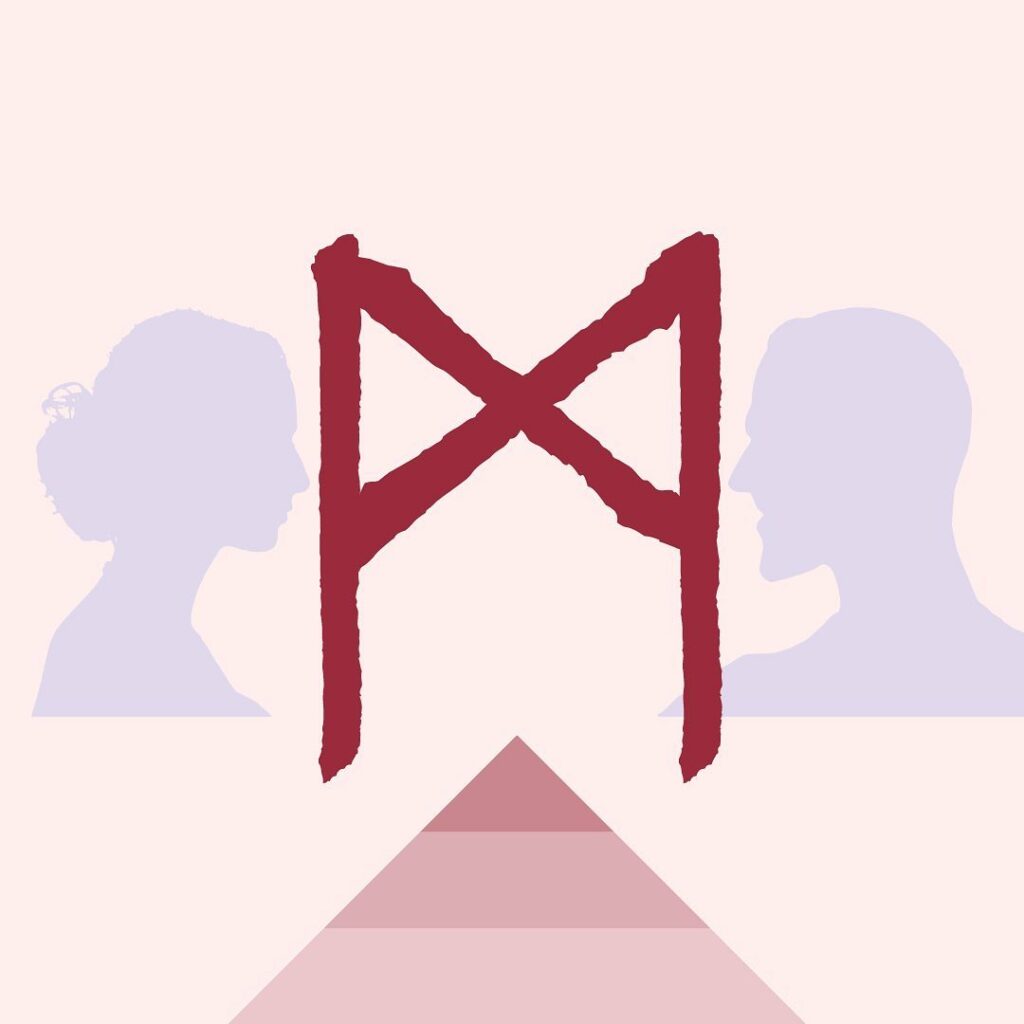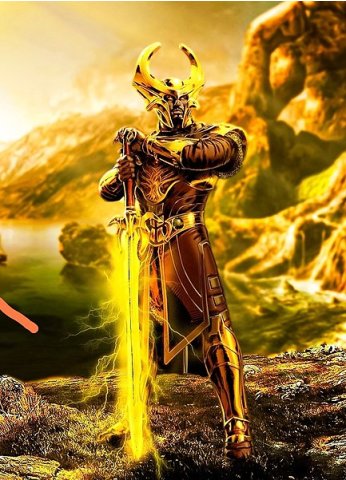Imagine, if you will, a time when the Norse roamed the earth, their lives intertwined with a mystical system of symbols known as the Elder Futhark. Among these symbols, one stands out – the Mannaz rune. This is not just a rune, but a representation of us, of mankind. Today, we’re setting sail on a voyage of discovery, exploring the depths of the Mannaz rune and its significance in the Viking Age.
Picture a Viking, his fingers tracing the lines of the rune etched into a stone. This is not just a symbol, but a reflection of himself, his community, his very essence as a human being. This is the world of the Mannaz rune, a symbol that captures the spirit of mankind.
Mannaz: Background and Description
The Elder Futhark, a system of writing that dates back to the 1st century, is a window into the past. It’s a glimpse into a time when runes were more than just letters, but symbols imbued with deep spiritual significance. The Mannaz rune, nestled between Ehwaz, the horse rune, and Laguz, the rune of water, holds a special place in this ancient alphabet. Its name, derived from the Old Norse word ‘maðr’, translates to ‘man’.
As we journey from the Elder Futhark to the Younger Futhark, around the 8th century, we see a reduction in the number of runes. Yet, Mannaz remains, a testament to its enduring significance. After all, what could be more essential to the Vikings than the concept of mankind?
Graphical Representation

The rune, at its core, is a symbol of humanity. Picture two vertical lines, where towards the top, they are connected by two shorter lines, crossing each other. This is Mannaz, a symbol that embodies the spirit of mankind.
Over the centuries, the rune has evolved, with variations appearing in different contexts. Yet, no matter the variation, the essence remains the same – a symbol of mankind, standing strong and proud.
Phonetic Value
In the Proto-Germanic language, the Mannaz rune represented the ‘m’ sound. This phonetic value has remained consistent across the evolution of the Germanic languages. Whether in Old Norse, Old English, or Old High German, it has always been associated with the ‘m’ sound, further cementing its connection to the Old Norse ‘maðr’, man.
Symbolic Meaning of the Mannaz Rune
The Mannaz rune is a symbol of humanity, community, and cooperation. Its Proto-Germanic translation, ‘man’, encapsulates its essence perfectly. In the Viking Age, community and cooperation were vital for survival, and the rune reflects these deeply ingrained cultural beliefs.

In the rich tapestry of Norse mythology, the Mannaz rune is often associated with the god Heimdall, the guardian of the gods. Just as Heimdall watches over the gods, the Mannaz rune symbolizes our responsibility to watch over and care for each other.
The Aett and its Symbolism
The rune belongs to Tyr’s aett, one of the three groups of runes in the Elder Futhark. Each aett is associated with a specific Norse god or goddess, and in this case, it’s the brave warrior god, Tyr.
Tyr’s aett is a collection of runes that embody themes of courage and justice, as well as balance, much like Tyr himself, the god of law and heroic glory. The Mannaz rune, with its symbolism of community and cooperation, fits perfectly within this aett. It’s a symbol of mankind’s ability to work together, to balance individual needs with the needs of the community.
The aett system is a crucial part of understanding the Elder Futhark. It’s not just about individual runes, but how they interact and relate to each other within their aett. The Mannaz rune, as part of Tyr’s aett, carries the warrior god’s spirit of justice and balance, reminding us of our duty to each other.
Elder Futhark Quiz
Do you want to test your knowledge of Elder Futhark runes? Then this quiz is perfect for you!
Don’t forget to play our other games as well!
Mannaz Used in Divination and Magic
While I must admit, I’m not a practitioner of divination or magic, I can’t deny the fascination these practices hold. The Mannaz rune, in runic divination, is often seen as a symbol of self, community, and human relationships. It’s a reminder of our interconnectedness, our shared humanity.
Historically, people used runes in magic and spellwork, and they made no exception for this rune. Its association with mankind made it a powerful symbol for invoking unity, cooperation, and understanding. While we can’t say for certain how the Vikings used Mannaz in their spells, its symbolic meaning offers some intriguing possibilities.
Mannaz in the Younger Futhark – The Transformed Humanity
In the period when the Elder Futhark was evolving into the Younger Futhark, around the 7th and 8th centuries, Mannaz, representing humanity or the self, underwent a transformation. While it represented the ‘m’ sound in both Futharks, its appearance changed in the Younger Futhark. This evolution signifies the adaptability and resilience inherent in humanity. In the Younger Futhark, it is known as maðr.
Frequently Asked Questions
The Mannaz rune symbolizes mankind, community, and cooperation.
The Mannaz rune belongs to Tyr’s aett in the Elder Futhark.
In runic divination, practitioners interpret Mannaz as a symbol of self and community. They likely utilized it in magic to foster unity and cooperation.
Featured Image Credit: BK, Public domain, via Wikimedia Commons
